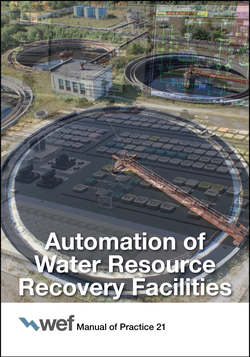Читать книгу Automation of Water Resource Recovery Facilities - Water Environment Federation - Страница 110
3.1.6.4 Simulation Software
ОглавлениеMany system integrators now use simulation software to test program logic before scheduling a factory test. The contract should specify that simulation software be used during testing as well. This software should have the following features:
• Process-specific libraries of unit operations and physical properties;
• The ability to define characteristics (e.g., flow, level, temperature, and pressure) of discrete devices, loops, and objects in the control system model;
• The ability to simulate all process control system signals, alarms, and shutdown scenarios in real time;
• The ability to model all process feedback using graphics and symbols;
• Full, workstation-based control over the behavior of each object in the model;
• The ability to develop custom graphics;
• “Point-and-click” access to object parameters as they are being executed in the background;
• The ability to communicate directly with operator interface terminal (OIT) software;
• The ability to communicate with specified PLCs;
• Operator-training tools that meet Occupational Safety and Health Administration 1910.119 recommendations; and
• Tag numbers for panels, equipment, and instruments used in simulation software should be identical to those in the contract P&IDs.
In addition, the contractor should be required to retain the services of the simulation software supplier’s factory-trained technician. These services should be provided during factory testing, startup, field testing, and training. The contractor should bear all costs (including transportation and lodging expenses) related to these services. A comprehensive guide to factory testing is presented in ISA’s (2011) Automated Systems in the Process Industry—Factory Acceptance Test (FAT), Site Acceptance Test (SAT), and Site Integration Test (SIT).
